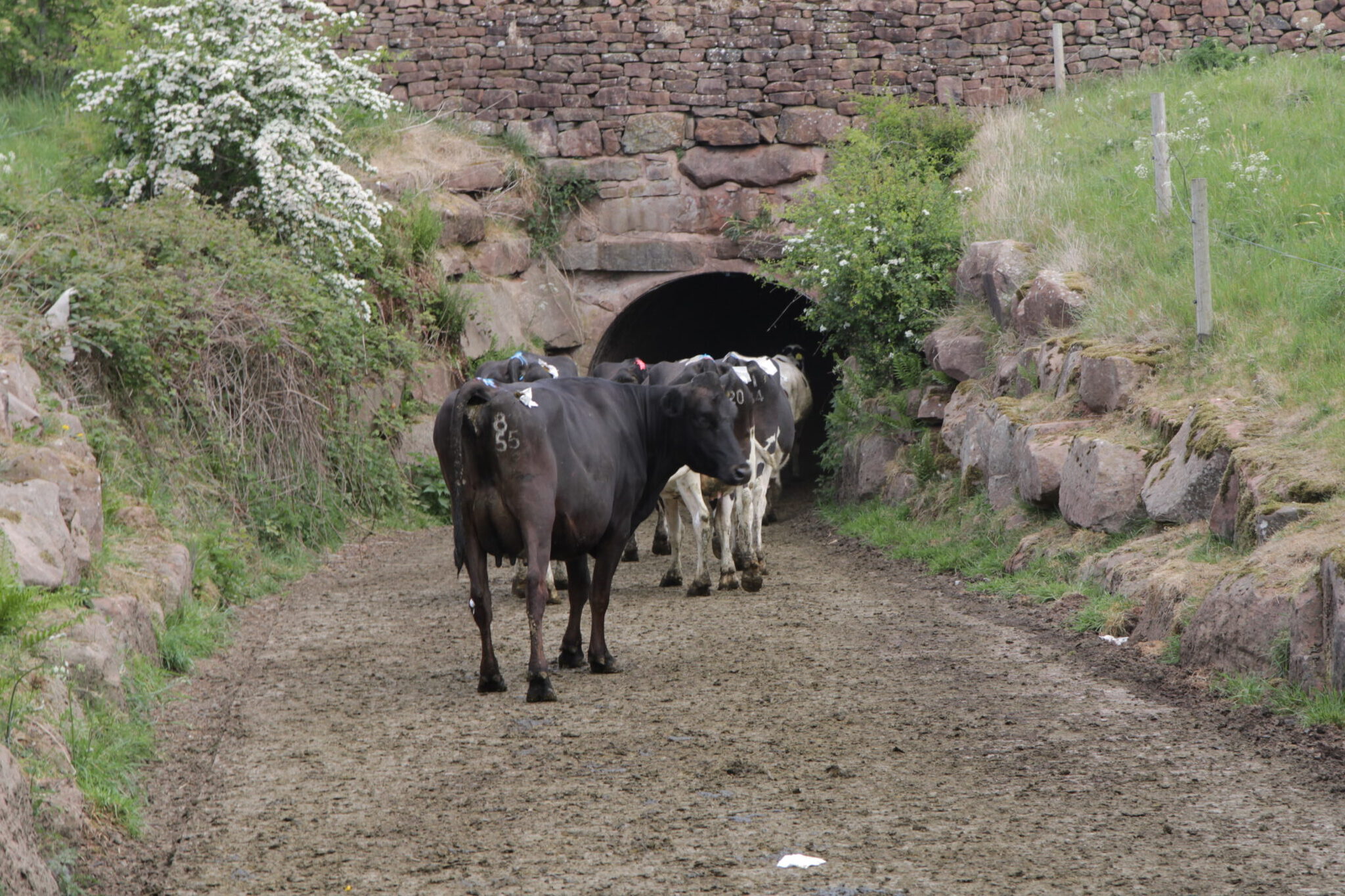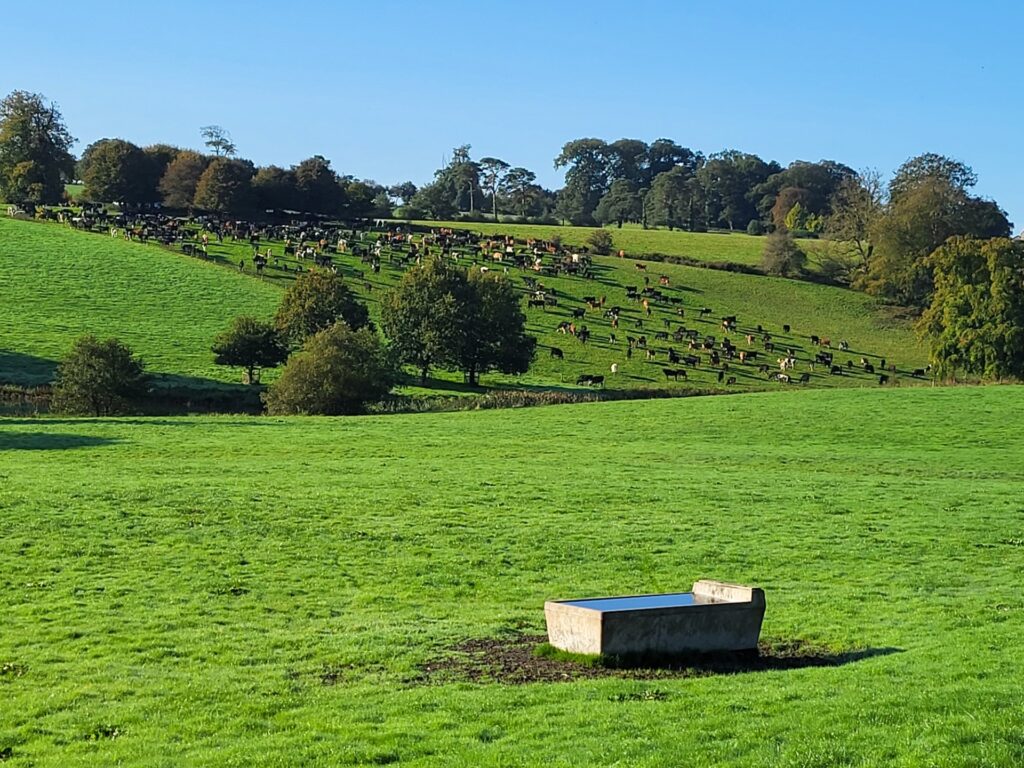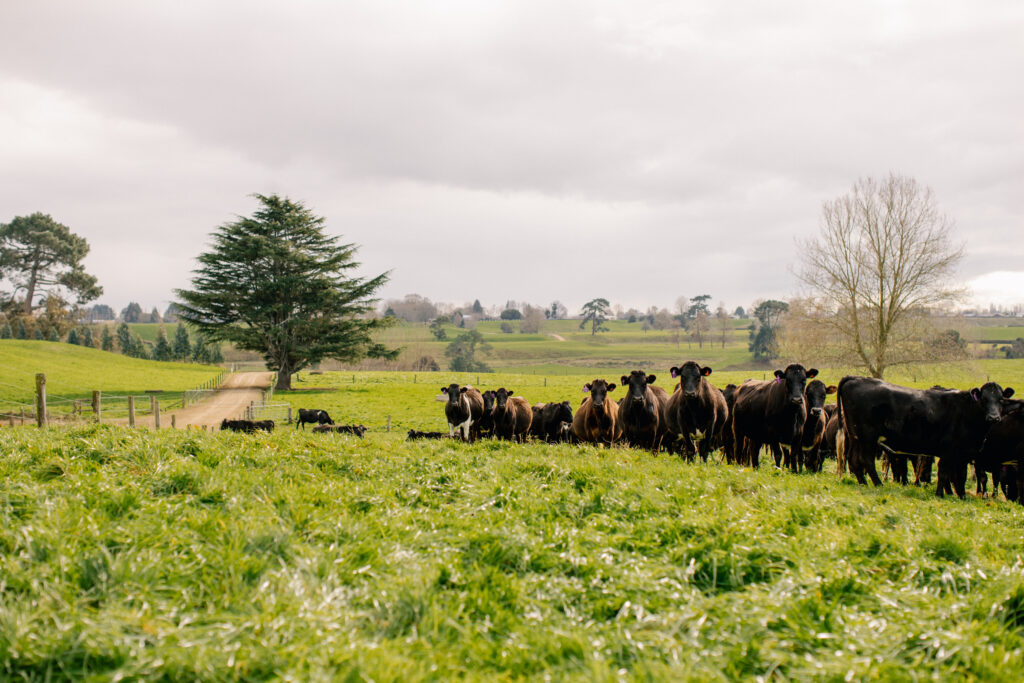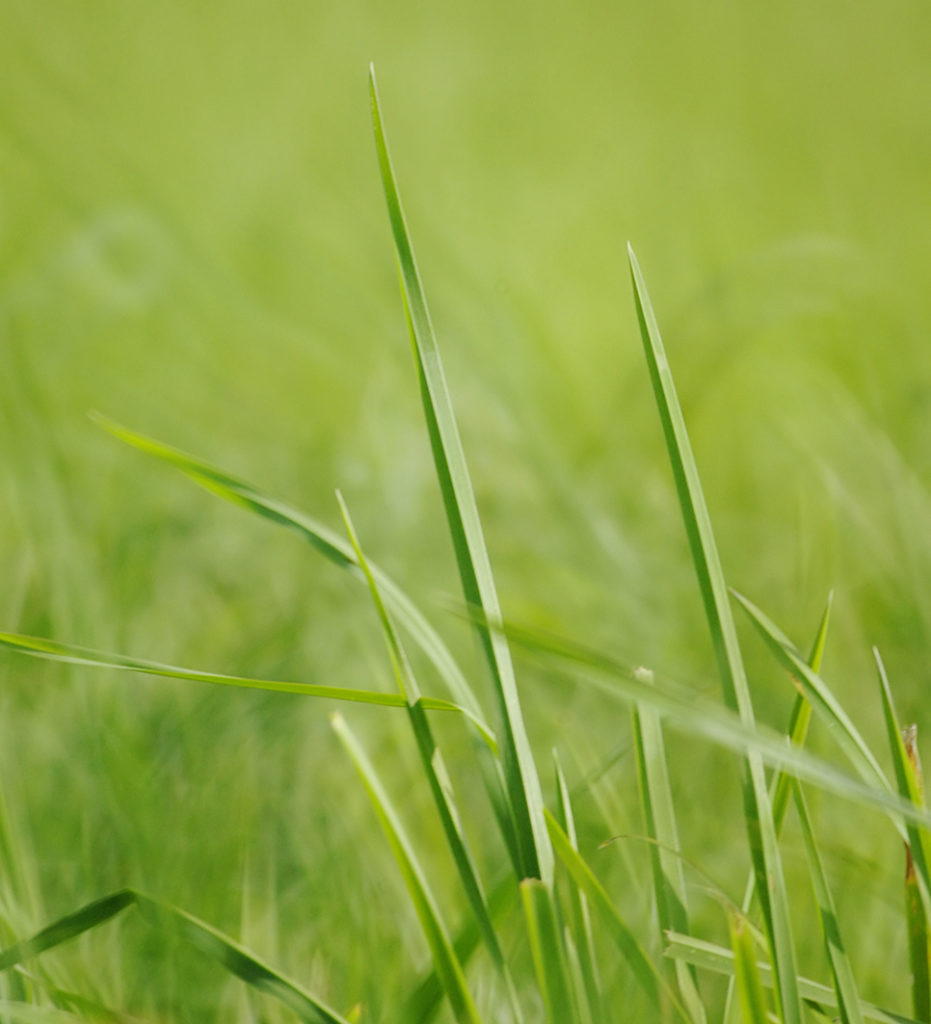It was the perfect time to witness the carefully crafted breeding strategy that underpins the farm’s success.
A strategic approach to genetics
South Dyke Farm’s breeding approach blends smart data with practical simplicity. Rather than relying on complex pre-mating checks or interventions, the farm’s straightforward system focuses on key performance indicators (KPI).
“We don’t do any pre-mating checks, no wash-outs, no interventions of any kind really,” James explains. “I mostly try to keep things really simple.”
However, under this simple approach lies a sophisticated breeding programme designed to maximise genetic gain and farm efficiency. South Dyke Farm prioritises their most productive animals for replacement breeding:
- The top 10% of cows are served with sexed semen to produce heifer replacements
- The next 20% of cows are served with conventional semen
- The rest are served for beef production
Selection is based on efficiency metrics, particularly the ratio of milk solids production to liveweight. A KPI that aligns perfectly with their focus on creating a low-maintenance, highly productive herd.
Tailored heat detection methods
The farm tailors heat detection methods based on animal age and behaviour:
- Mature cows: Tail paint application, checked daily in the parlour with additional paddock observations
- Heifers: Scratch cards, which the team finds more effective due to the heifers’ more animated behaviour
“I think the heifers tend to be a bit of a different experience to the cows. They’re a bit giddier, aren’t they? So, it’s a bit easier with scratch cards, we find,” notes James.
In previous seasons, the farm has also used teaser bulls for heat detection, showing their flexible approach to management.
Innovative approaches: embryo transfer
This breeding season, South Dyke Farm has ventured into new territory by introducing embryo transfer technology.
“We’re doing it a little bit different this year, just because we’re using some embryo transfer, which is a new thing we’ve done this year for the first time,” James explains.
This is a natural evolution in their already advanced breeding strategy, allowing them to accelerate genetic progress by producing more offspring from their top-performing animals.
Professional partnerships
Central to the farm’s breeding success is their relationship with skilled technicians. The farm has worked with their current technician, Kerry, for approximately three years, and values her experience with seasonal, block-calving herds.
“Kerry’s excellent,” James remarks. “If you look at the stats from last year, it’s pretty good conception really.”
Having technicians familiar with high-volume, seasonal breeding programmes is particularly valuable during peak serving periods. James adds: “With block calving as well, they’re used to serving a lot of cows, and if we have 30 cows in that race, it doesn’t faze them.”
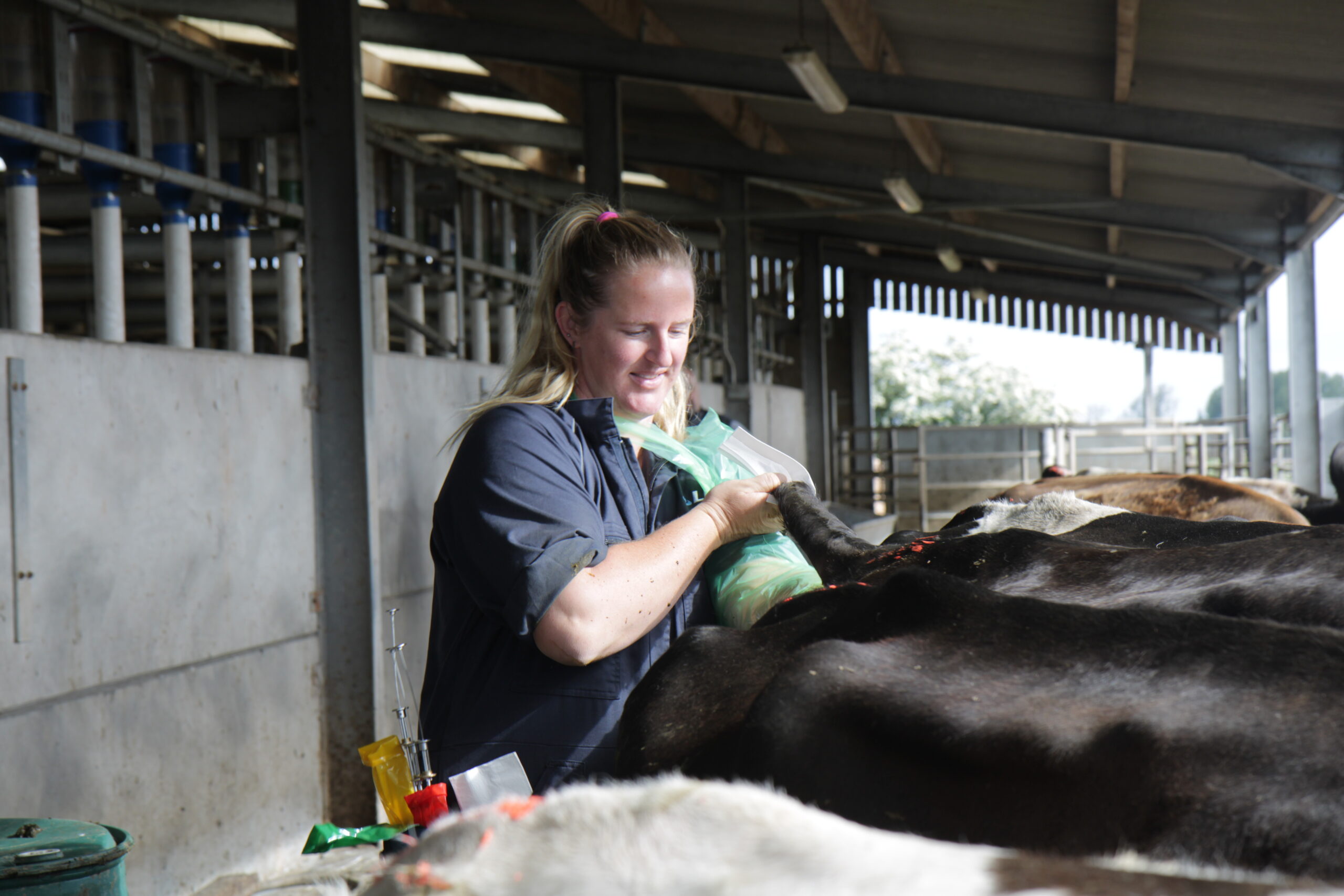
Meeting seasonal challenges
This year’s breeding season came with unusually warm weather, which can be challenging for heat detection and conception rates.
“With the heat, we are keeping a really close eye on heat detection, because I think in the heat it is a bit more of a challenge to spot everything,” James explains. In response, the farm has ramped up their observations, with morning parlour checks and extra paddock checks during the day.
This proactive approach has paid off, with nearly 100% of heifers and over 90% of cows served within the crucial first three weeks of the breeding period.
Early body condition preparation
Rather than focusing exclusively on body condition during the breeding period, South Dyke Farm takes a longer-term approach that begins months earlier.
“Our strategy for body condition score mainly starts in October, November,” James notes. “We think that if we dry cows off at the right body condition, they’ll be fine right through to now.”
This forward-thinking approach, combined with their focus on breeding efficient, resilient animals, has paid dividends. As James explains: “If they’re dried off at the right body condition, and they calve down and we have close to zero problems calving, then you’re not going to have an issue now.”
Selective use of sexed semen
South Dyke Farm’s takes a thoughtful, targeted approach to using sexed semen. Key criteria includes:
- Only using it on cows calving within the first three weeks of the calving block
- Reserving it for cows displaying strong heats
- Avoiding use on animals that had difficult calvings
This careful selection process helps maximise the value of sexed semen, focusing it on animals most likely to conceive successfully.
“We’d only put sexed straws on anything that has a really strong heat,” James explains, highlighting their practical approach to optimising conception rates.
Multi-breed strategy
The herd consists of three distinct breeds, Friesian, Jersey, and crossbred, each bringing different strengths to the system. South Dyke Farm primarily uses LIC genetics to maintain a balance between these breeds while continuously improving efficiency across the herd.
“We’re looking to keep the numbers of the breeds the same, so we’re using a bit of everything,” James explains. “We’re looking for high solids, high fertility, very low maintenance cows, very efficient, really.”
Managing grazing challenges
Our second visit to South Dyke Farm came during a tough grazing spell, following unusually dry weather since last autumn. This added extra pressure during the crucial breeding period.
“It’s really dry now. Growth is probably less than 50. It’s certainly less than demand,” James reports. “Quality is poor because the grass looks quite stressed and it’s growing quite stemmy.”
To mitigate these challenges, the farm has increased concentrate supplementation to 6kg per cow, which significantly higher than their typical 0.5kg rate for this time of year.
“Normally this time of year, we’d be feeding half a kilo just to get them in. But feeding six is like, for us, way over budget,” James acknowledges. However, the importance of maintaining nutrition during the breeding period justifies this approach: “Now’s the time of year, you can’t afford not to.”
Production performance
Despite the grazing challenges, the farm has achieved impressive early season production. Peak milk solids production reached nearly 1.8kg per cow daily, achieved on relatively modest feeding rates of approximately 3kg of concentrate plus grazing.
That is a standout level of efficiency, especially for the compact 450 kg cows, reflecting the success of a breeding strategy focused on the milk solids to liveweight ratio.
“For our little cows that are only 450 kilos, that’s pretty decent,” James notes with satisfaction.
Looking ahead
As South Dyke Farm progresses through the breeding season, their combination of data-driven selection, practical management, and innovative thinking positions them well for continued success. Their ability to adapt to seasonal challenges while staying focused on efficiency demonstrates the resilience that has become their hallmark.
In our next visit, we’ll explore how these breeding decisions shape the farm’s summer management as they prepare for the autumn transition.
Farm facts: South Dyke breeding at a glance
Heat detection: Tail paint for cows, scratch cards for heifers.
Breeding strategy: Top 10% to sexed semen, next 20% to conventional semen, remainder to beef.
Key selection criteria: Milk solids to liveweight ratio.
Target traits: High solids, high fertility, low maintenance, efficiency.
Peak production: Nearly 1.8kg milk solids per cow daily.
Average cow weight: Approximately 450kg.
